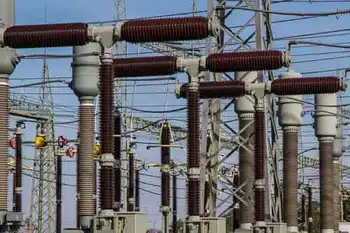Off-grid life can be comfortable
Even in winter-challenged Canada, however, there are plenty of examples of off-grid homes that are not connected to local power sources and are self-sufficient for most of their energy needs.
Anthony Ketchum, 70, built one such dwelling about a decade ago: a cottage in the Hockley Valley, a 20-minute drive from Orangeville, Ont.
His house gets its electricity from seven photovoltaic panels that feed a battery bank, and a small wind turbine boosts the system in winter months.
"We took the plunge to be off-grid and heat the house from earth sheltering," says Mr. Ketchum, owner of Household Project Management Inc. in Toronto, where he lives.
The 4.2-acre property is on a steep hillside, so two sides of the three-bedroom, two bathroom house are below ground. This means it benefits from some natural geothermal heat and stays above 10 degrees even in winter, with no added heat source. An occasional wood fire is all it takes to keep things comfortable.
The south and west faces are exposed, with lots of windows to capture solar heat. The house also has custom krypton-filled windows that are heat mirrored (an interior film effectively makes them triple-glazed) and insulate to R8. The windows cost about $12,000, Mr. Ketchum says, but "over time they paid for themselves."
Although it is a getaway cottage for him and his wife, he estimates that if it were heated for year-round use, it would take about a cord of wood a year, at a cost of about $600. When he does use wood, it is burned in a special masonry heater that is common in Scandinavia; it weighs six tonnes and holds heat long enough to keep the place at room temperature for 24 hours, he says.
"You have to learn how much (electricity) you can use," Mr. Ketchum says of living off-grid. "We have to be careful how much we use and know how much everything uses." The pump for the well, for example, draws a lot of power.
By choosing energy-efficient appliances and using the electricity carefully, the couple enjoy many conveniences including power tools, a vacuum cleaner and a dishwasher. But inefficient ones that convert electricity use to heat, such as a clothes dryer or hair dryer, are out.
The house has two composting toilets and a 9,000-litre underground cistern fed by rainwater from the roof.
"I can't stand the waste of electricity in our society and am not a fan of nuclear. I grew up in a time when you conserved electricity," Mr. Ketchum says "The chance to do something off-grid was a dream I had that I never thought would be possible."
And when the ice storm hit in 1998 and his neighbours were without power, some of the non-environmental reasons for going off-grid became abundantly clear, as he sat in his cozy living room enjoying life as usual.
Related News

France and Germany arm wrestle over EU electricity reform
PARIS - Despite record temperatures this October, Europe is slowly shifting towards winter - its second since the Ukraine war started and prompted Russia to cut gas supplies to the continent.
After prices surged last winter, when gas and electricity bills “nearly doubled in all EU capitals”, the EU decided to take action.
In March, the European Commission proposed a reform “to boost renewables, better protect consumers and enhance industrial competitiveness”.
However, France and Germany are struggling to find a compromise and the clock is ticking as European energy ministers prepare to meet on 17 October in Luxembourg.
The controversy around CFDs
At…





